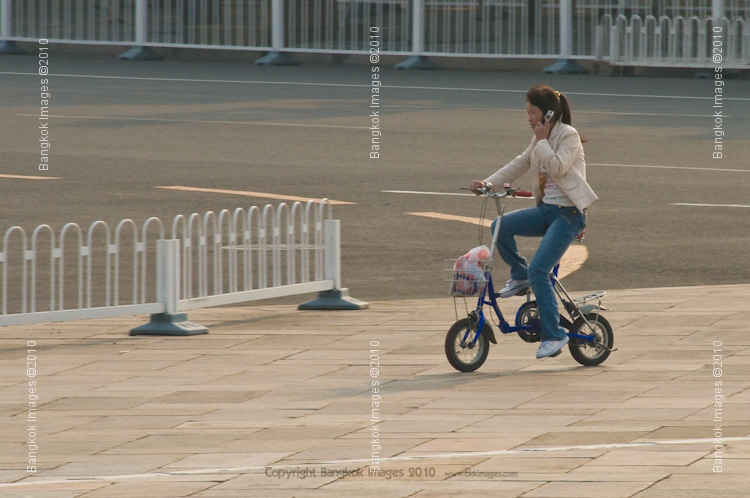Special Beijing Welcomes You Part 2

|
• Dar Al Iman InterContinental Hotel Madina • Golden Tulip Andalusia Riyadh Hotel • Boudl Almasyaf Hotel • Qasr Nasriyah Golden Tulip Hotel |
Please enjoy the first of this two part series by Tom Tweedel. We're working behind the scenes to bring our new website online and we plan to go live with the new site as a special on May 22nd. So far we're behind schedule but doing our best to make up time and meet our planned launch date. During this opening special we'll introduce the new site and show you all the new areas and how to use them. From forums to user galleries to comments on each piece, we hope to bring the Thailand expat community a quality photo site with all the important features. I hope you're looking forward to it as much as we are.
Tom Tweedel is a good friend with significant experience in China and has self-published several interesting volumes of his travels in China complete with many great images and informative narrative. Last year he visited Thailand for the first time and I had a great time showing him around the area. Somehow he found time to put together a like 340 page book of his travels around Thailand and you can get your copy here! I've got a copy of this book and I can tell you it's well worth it, especially for first time travelers or if you haven't seen more of Thailand than downtown Bangkok.
Tweedel is a good friend with significant experience in China and has self-published several interesting volumes of his travels in China complete with many great images and informative narrative. Last year he visited Thailand for the first time and I had a great time showing him around the area. Somehow he found time to put together a like 340 page book of his travels around Thailand and you can get your copy here! I've got a copy of this book and I can tell you it's well worth it, especially for first time travelers or if you haven't seen more of Thailand than downtown Bangkok.
When Tom agreed to become part of our small select product review team I was both excited and grateful. I hope you enjoy this and future reviews by Tom. For those whose plans include extended travel in Thailand and China I’d recommend contacting
Tom and inquiring into obtaining copies of his books. Tom Tweedel is an Austin, TX based photographer and can be reached at: tomsds@austin.rr.com
Beijing Welcomes You – Part 2
While in Beijing we signed up for a form of city tour. It was kind of a low key cross between public transportation and a tour bus ride. There was a tour guide who provided some information but it ran a scheduled route that you might take to go somewhere.
It was an interesting way to get somewhere and see part of the city.
The destination of the bus was the Olympic Complex. Arriving there was somewhat of the halfway point and then you headed back.
The starting point of the trip was just outside Quinamen Street. There are a series of bus stops there that serve as a starting/transit point for many routes. It was especially convenient for us because it was within walking distance of our hotel. We
bought the tickets at a booth and hopped on for the ride.

Traffic in Beijing was not a unique experience. It was bad in parts, good in others but as a whole it was orderly. Not nearly the free for all I had experienced years earlier. Of course we kept to the major roads. Cars can stack up for quite a distance.
Beijing, home to 20 million is pretty flat and for the most part laid out in a grid.

Our route took us out of the downtown tourist areas and though some of the central neighborhoods which had some interesting charm. We got a peek into normal life for some of the cities residents. Beijing and China as a whole are in the middle of a transformation
not seen in the west since just after World War II. Incomes are rising, life is changing, the old is being eclipsed by the new. While their numbers have diminished bicycles are still a common scene on the street. Two of these bikes have built
into delivery vehicles.

We drove past a tree covered park that was full of retirees enjoying their morning. The occupants practiced Tai Chi, Ping Pong, Chess and other pastimes. They looked rather happy. Being retired in China is somewhat of a different experience than in the
US (at least for urban workers). Many older retirees are still covered by government mandated fixed benefit pensions. This can give a greater degree of security, though that is changing as the companies they worked for are often privatized. Even
then though the impression I got was there is a lot more respect and resources allocated to old people in China vs. the west. The old people themselves are also more socially active. Most of them are still in the same area and with the same people
they lived most of their lives with vs. being scattered across the country following their far flung children.

We went past a very beautiful bridge with a willow tree covered Island in the background. This was part of a park complex.

We passed a nice looking restaurant in the central Beijing area. Many of the larger restaurants have facilities for private parties and functions rather than just general dining.

Every now and then going down the road you would see some type of tower or impressive structure. Really gave the city some flavor.

The area that we drove though is/was one of Beings’ famous Hutong neighborhoods. Hutongs were traditional low rise courtyard based buildings common in northern China. They are very densely packed and three dimensional. Cobbled together over the
span of centuries they tended to be very organic and complex. Going through them is like working a maze. Many of them have been torn down to make way for the high rise future.
Some Hutong neighborhoods have been preserved, in a sense. Many of the buildings were torn down or gutted and then rebuild and remodeled. They kept some of the same architectural charm and irregularity but now had little things like running
water.

This was an interesting shot for all it captured between old and new. You have the newly rebuild Hutong next to the old unrefurbished section. Hot rodded sporty cars next to old bikes. Everywhere the old is coming down and making way for the new. The
problem is a lot of people still cling to the old ways. That and their lack of connections has all but shut them out of the new wealth. How China manages these groups and this conflict is one of its major challenges.

A Hutong converted into commercial interests, in this case a video game store. Seems like quite a mismatch.
Notice that the Hutongs are now labeled with addresses on each section. Makes navigation a lot easier than the faceless alleys of the past.

One of the characteristics of the Hutongs was the irregular alleys that criss cross them. Much of “life” goes on in these alleys, away from main streets.

There was a tower rising above the Hutong neighborhood. This was an interesting sight to see these architectural anachronisms sprinkled about the place as we went through the city.

A doorway into a Hutong compound. I loved the color of the frame. I also wondered what interesting details lay beyond the door.

The Hutongs are a fertile ground for tourists. It appeared a large group was getting the rickshaw tour as we passed.

As our tour continued and we left the Hutong area we approached the Olympic Complex. We began to see signs of it like this unique covered walkway near the complex.

And this sign along a traffic overpass.
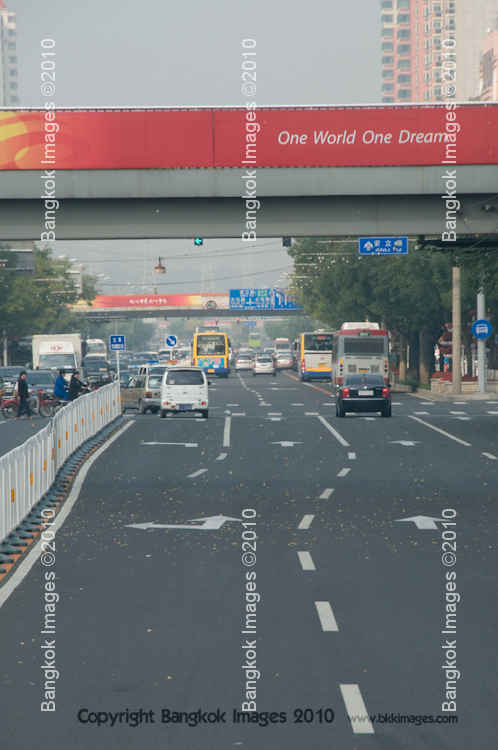
The Olympics we huge in China and even more huge (if possible in Beijing), for that time Beijing WAS China. All eyes, hopes and dreams were on it and the government was determined not to let them down. The money and effort that were expended to make the
games possible were truly historic.
When a US city gets the Olympics the city and county start working on the stadiums and other infrastructure to support the games. They get some input from the state but for the most part it is a local affair. When China got the games it mobilized the
resources of an entire nation to pull them off. It did things on a scale and scope that was unprecedented. The opening ceremony alone had a cast of thousands and cost somewhere above $300 million US to produce.
All that had past now the city was living in the afterglow of the event. Structures that had been created to support the Olympics were now being transformed into their more permanent and sustainable functions. Some of them as tourist attractions.
Around the Olympic center the Chinese Government built may buildings in the architectural style of some of the minorities or outlying provinces. Most of them are restaurants, gifts shops, hotels or some other form of tourist business.

There was a large Totem pole next to some recreation of ethnic cottages. I didn’t know any of the Chinese groups did this kind of art.
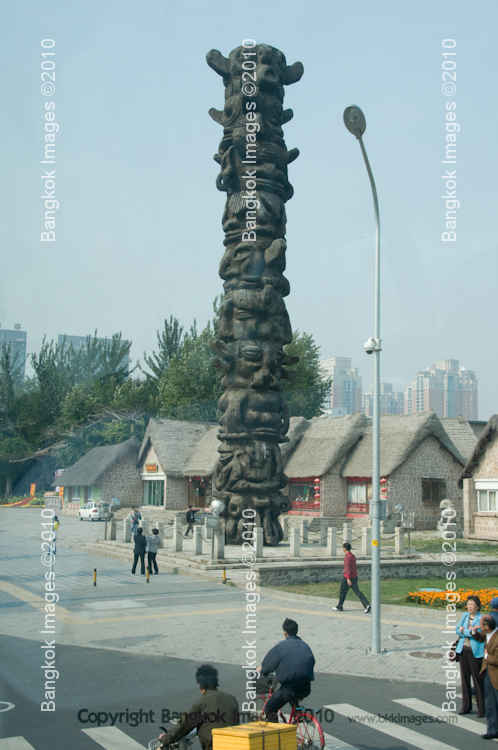
There was a hotel build in the style of structures in the more arid badlands of the Northwest China.
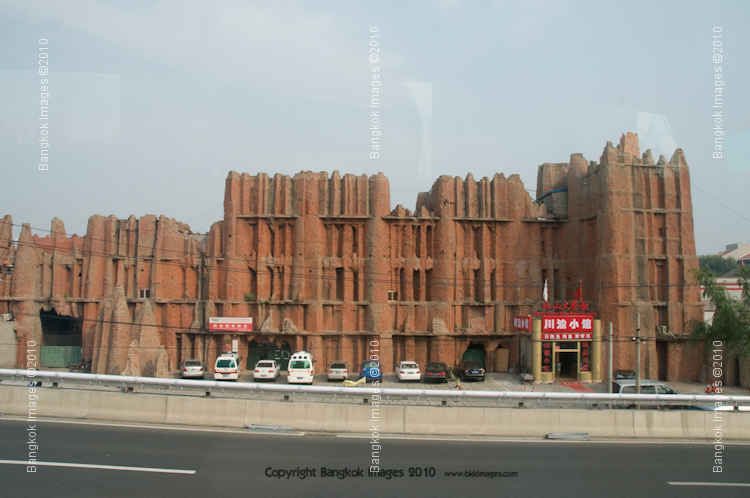
In addition to the minority themed structures there were many other interesting looking buildings in the area. Its nice to see a departure from the monolithic slab concrete blockhouse that dominates much of architecture.
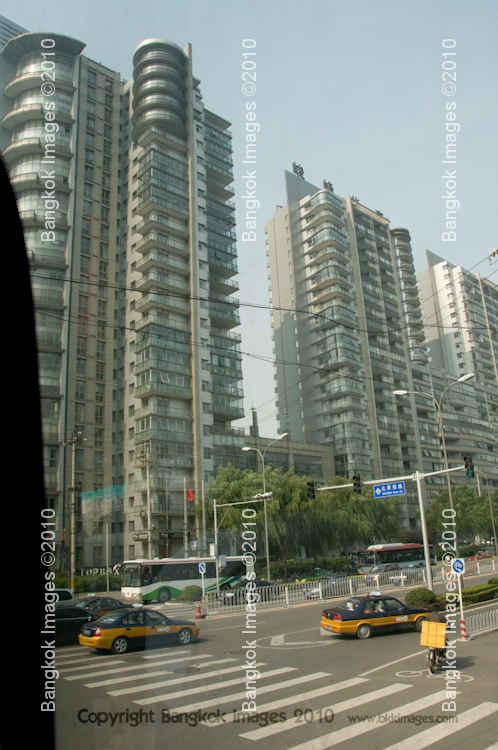
Eventually the Olympic Complex came into view. The Olympic complex was large but the crown jewels were easily the National Stadium (aka The Birds Nest) and the National Aquatics Center (aka the Watercube).
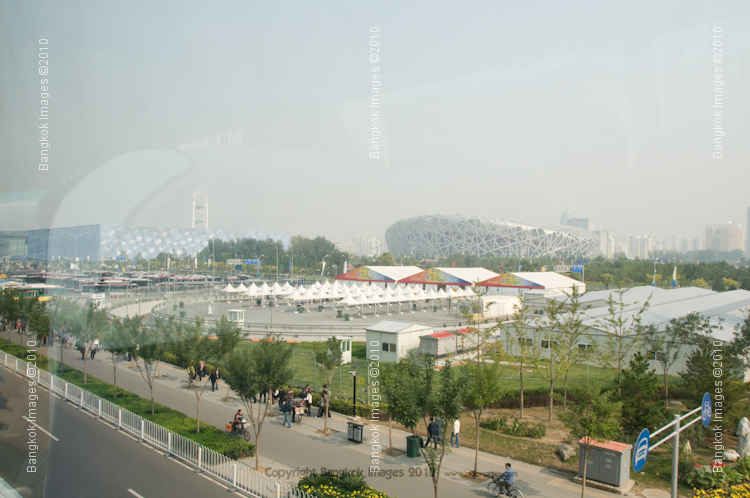
The Birds Nest was the focal point of the Chinese Olympic effort. The location of the Opening ceremony which was probably the most expensive and extensive live performance in human history and isn't likely to be topped again.

We spent a lot of time in the parking lot adjacent to the Birds Nest and Watercube. Alas both were closed so we didn't get to visit either.
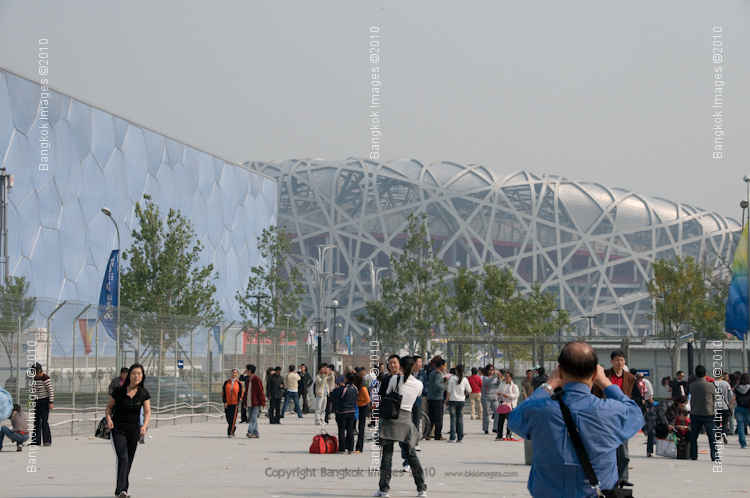
Another amazing structure was the Watercube. It was the home of much of the swimming competition. It has been praised for its innovate architecture in the structural, material and aesthetic aspects.

Its exterior walls were unique in that they were inspired by the geometry of soap bubbles and actually composed of bubble like plastic themselves.
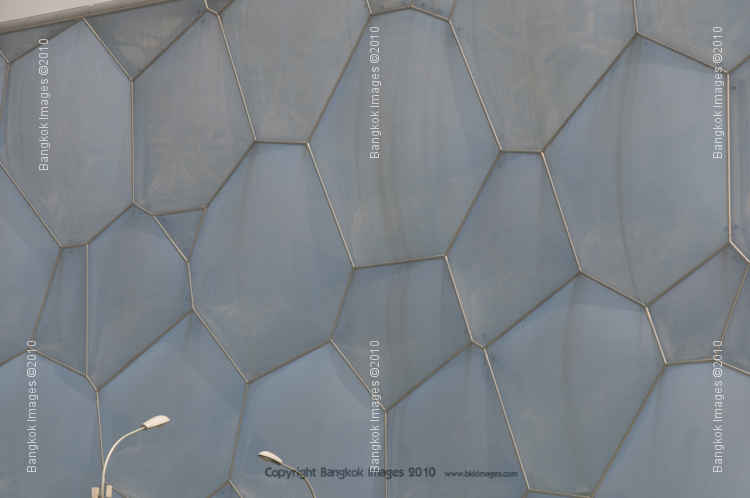
After spending some time in the parking of the complex we hopped back on the bust to continue our tour.
No translation is necessary for this sign. We’ll just put this one into the “Uh huh” category.
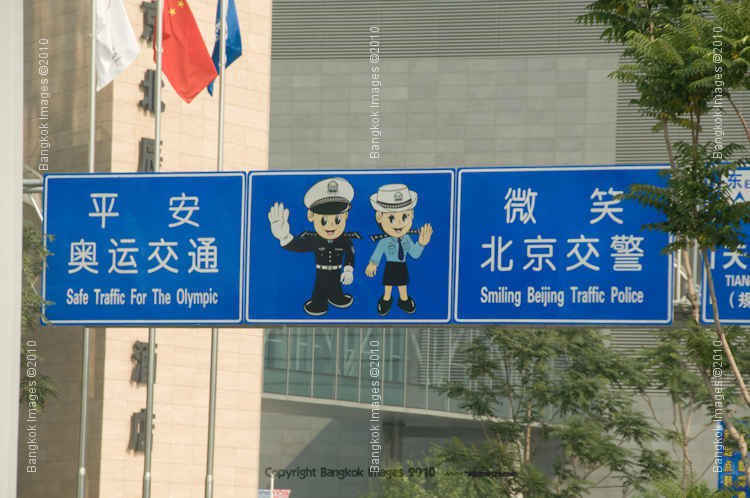
We passed a stadium where some of the ball games were held. It was quite interesting looking.
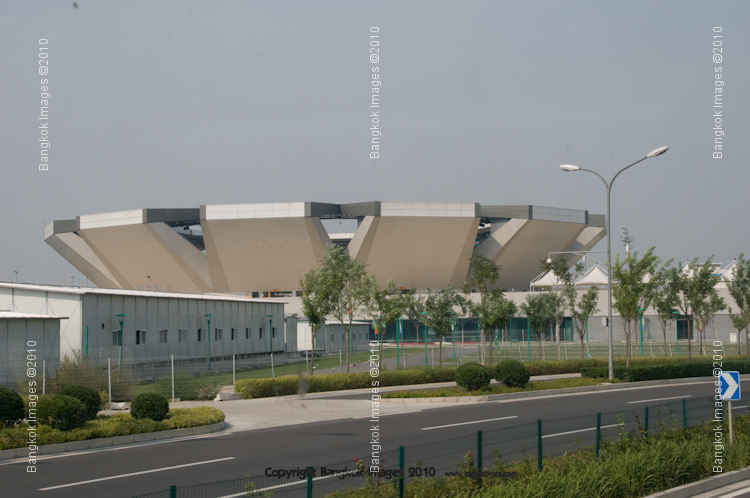
Continuing on we passed some of the Olympic Housing. Some was still in use for the Para Olympics where were winding down. Many of these buildings were already in the process of being sold off to individuals as apartments.
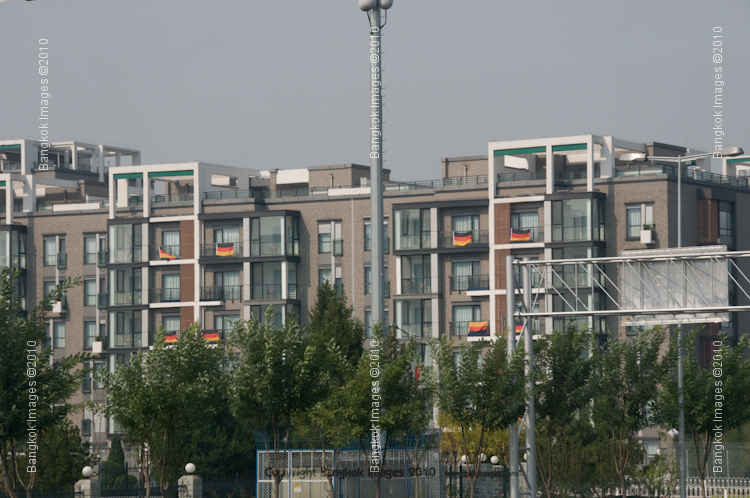
In addition to the sports related buildings we got a sampling of modern Beijing architecture which ranges from the amazing to the strange.
Strange came home to roost on this office building. It reminded me to the intro the Matrix Movies with sentences in many different languages etched across it.
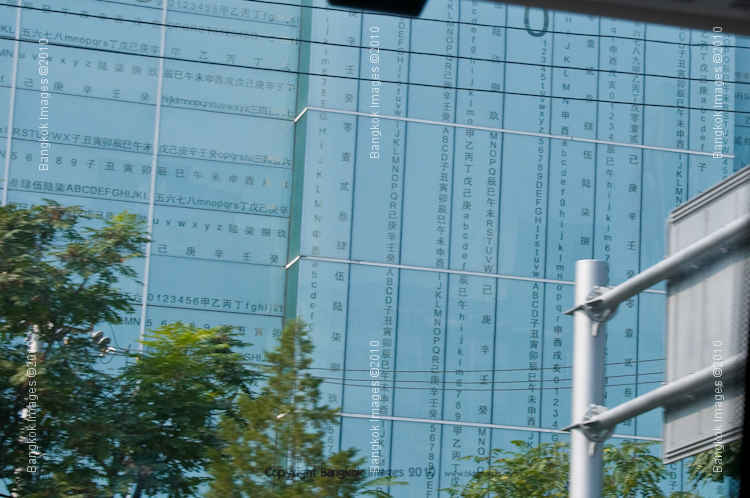
A small but colorful residential building. Many of the new buildings had significant effort invested in them to take them beyond the monolithic concrete blocks created in the not so distant past.
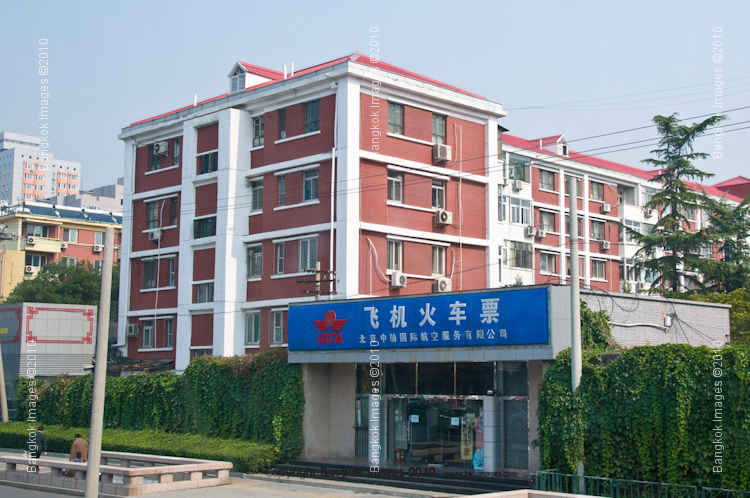
A building for the Workers Daily, a famous newspaper that still seemed to have communist trappings.
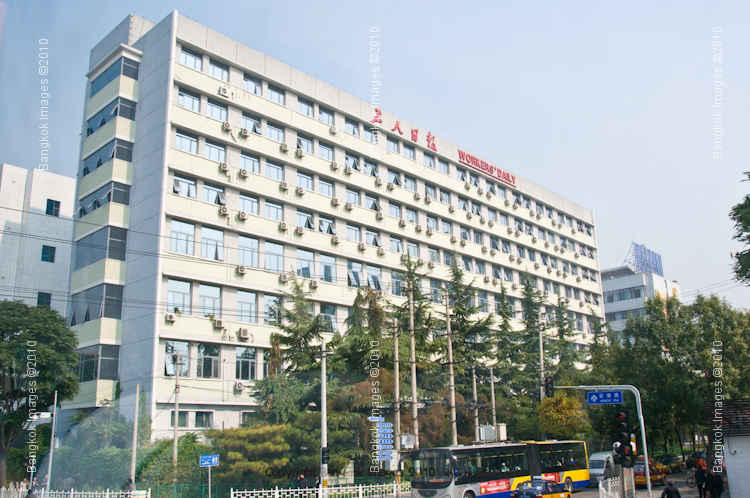
This residential Tower next to a small park represented some old school architecture, except that they bothered to paint it white. Most buildings like this in China are a grimy shade of gray.
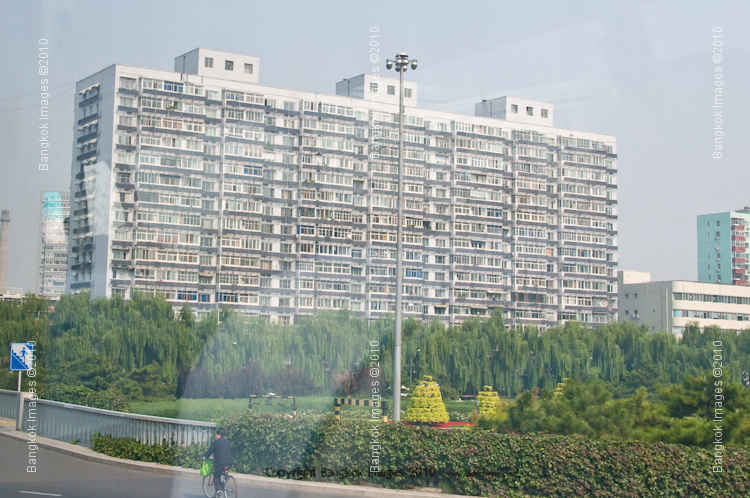
This restaurant clearly was trying to cash in on the Olympic fad as it was decorated like the swim cube.
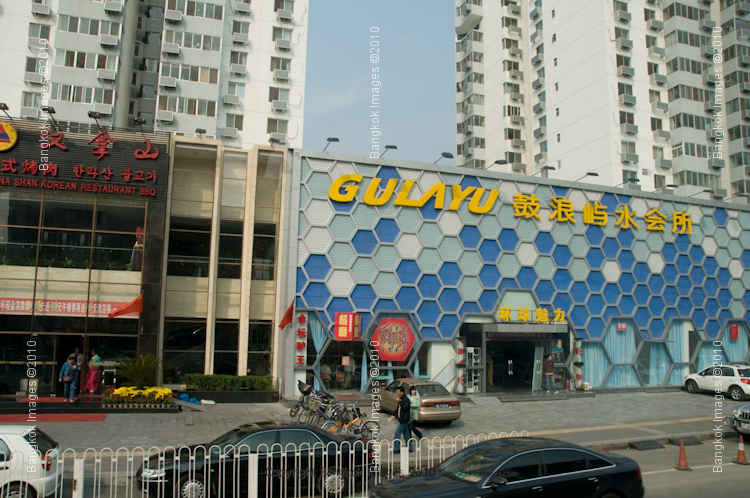
We had to stop at a bus stop to change busses. Our tour reached a somewhat greater than halfway point at the bus stop. We had to wait for the return bus to take us back to Quinamen. It wasn’t a long wait.
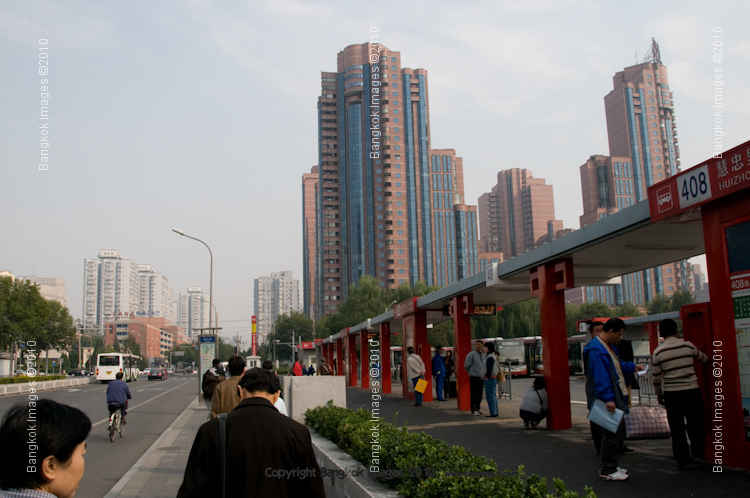
I took the occasion to take a 360VR of a very nice Beijing afternoon.
Content on this page requires a newer version of Adobe Flash Player.
Once back on the Bus we rode around some of the newer areas of the city before retracing our route back through the Hutongs.
This housing complex stood out among others for its color, construction and size. I wondered how many thousands of people called this place home.
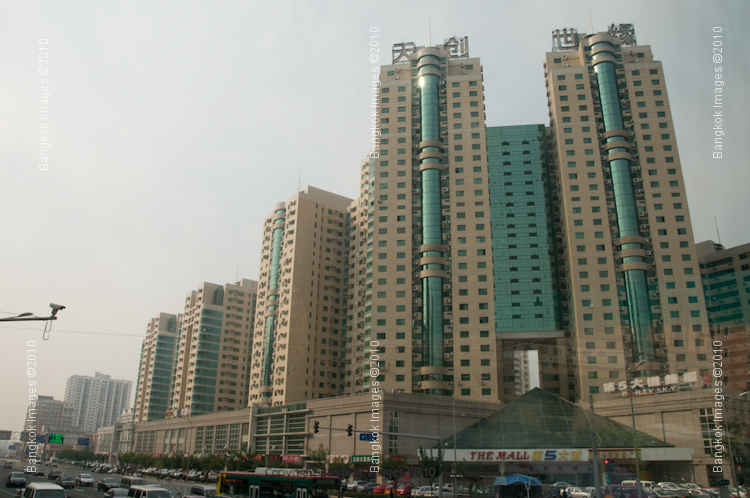
Next to the Highway were several large housing complexes. There were shops along the ground floor of this massive residential development. They in turn were in front of an underpass. I remember is area for its massive construction in all ways. Huge buildings,
huge roads.
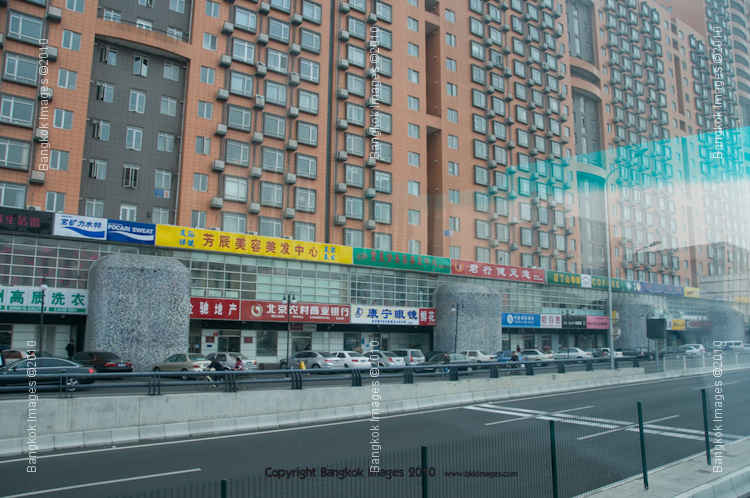
This was a typical block in this area. Long, straight and full of large buildings. The roads were wide, orderly and not too crowded.
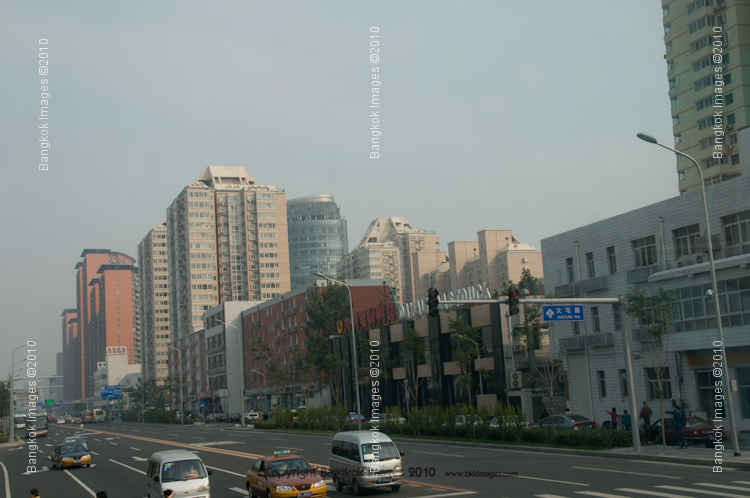
Traffic varied tremendously depending on location but as the day wore on it build up everywhere.
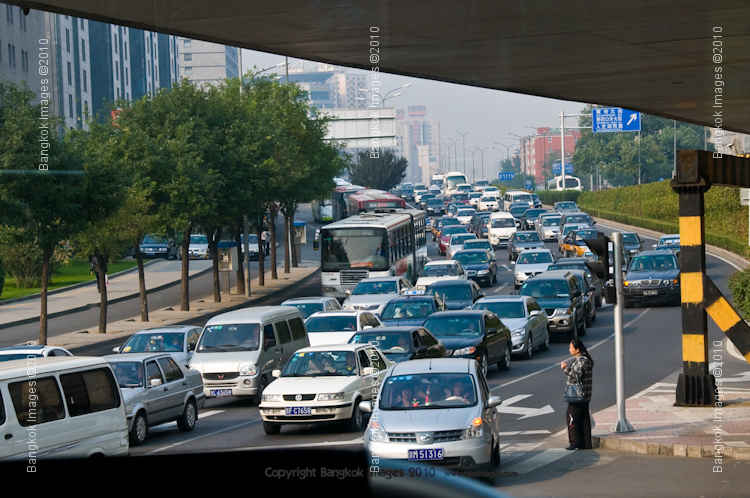
This guy definitely is a candidate for the “my job sucks” award. He is a flower deliveryman. He has to drive around all day in Beijing traffic wearing clown suit to deliver flowers.
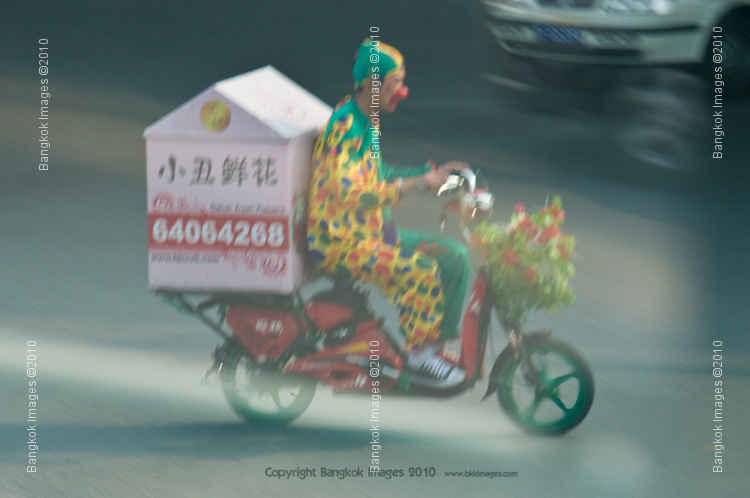
As bad as his job was these guys might have it worse. Two laborers hauling enormous loads on their deliver bikes. Most likely undocumented migrants from the countryside. Life in Beijing is not easy or pretty for them.
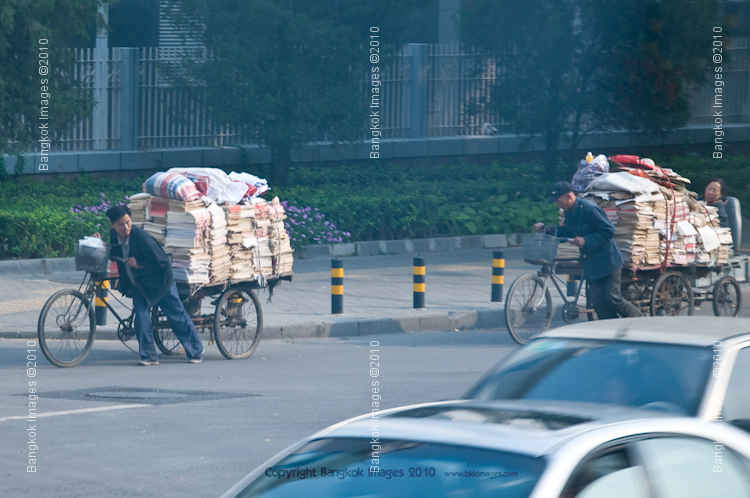
Eventually the bus took us back to the Hutong area. t was bustling with people getting off of work and getting ready for the evenings activities.
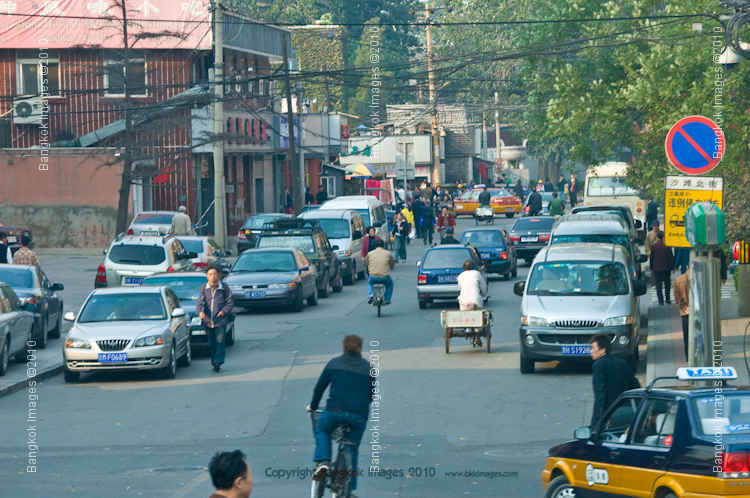
Coming back I decided to take a series of pictures of normal working Chinese people going about their afternoon activities. A mother and daughter run errands on their bikes.
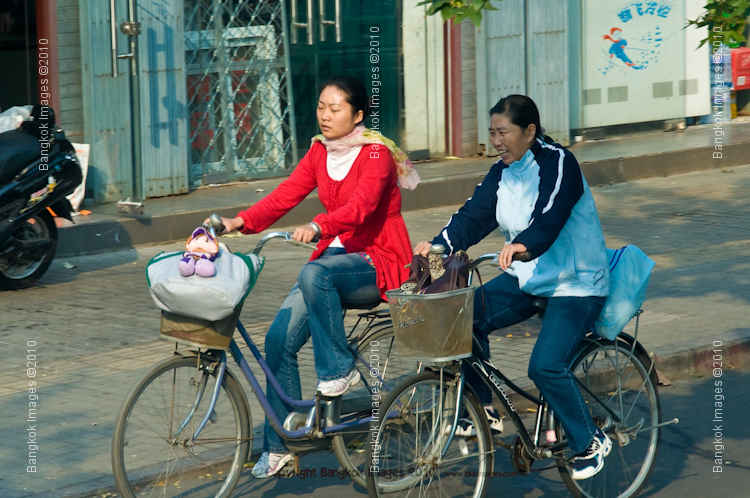
A typical busy street corner with lots of traffic and activity.
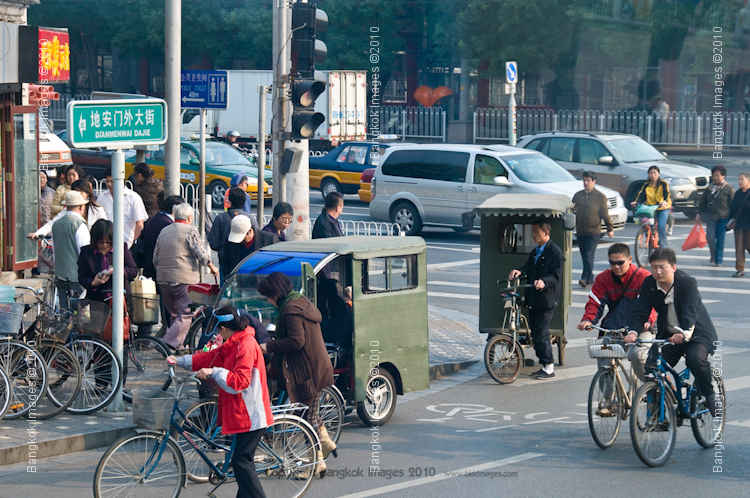
A Magazine salesman mans his post. This is a sight you don’t see very often in the electronic age.
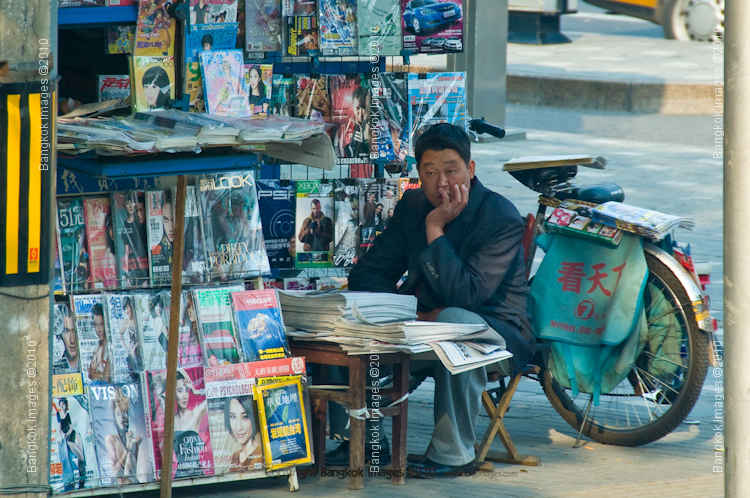
Some old ladies chatting. Notice also one of them has a dog. Pets in urban areas used to be very rare. Now while not common they are becoming increasingly popular. Especially as companions to only children and old people who’s child has left to
seek their fortune elsewhere.
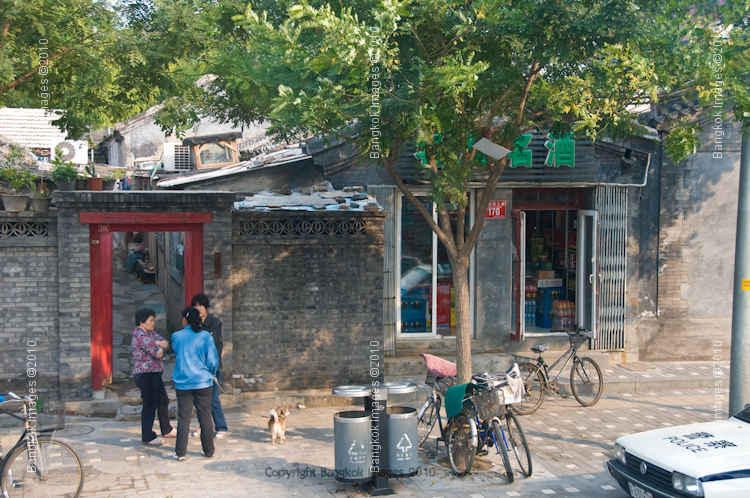
Family time in Beijing, a gathering of generations in a park.
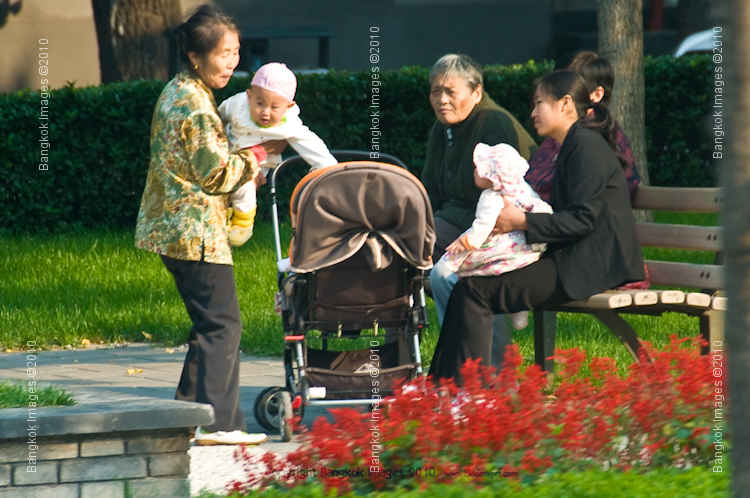
Driving along one of the avenues there was a long, thin strip of park that parallel the road. Every few blocks or so they would have a fountain with a small waterfall.
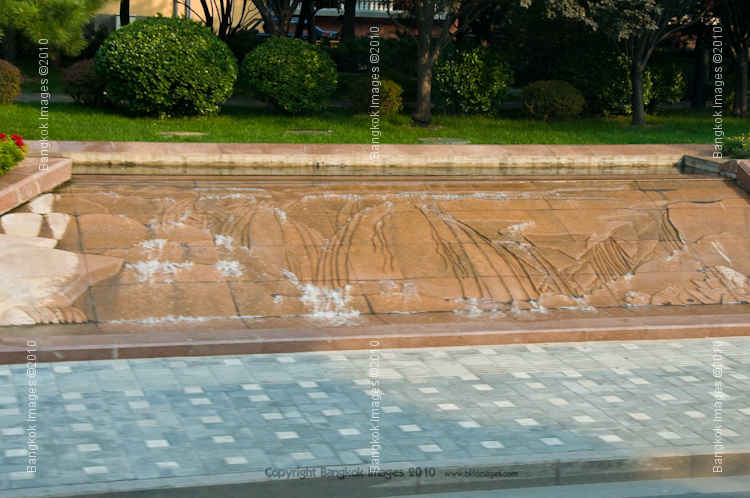
Some shops outside the Hutong area. Note the collection of bikes and motor scooters. Beijing is in transition.
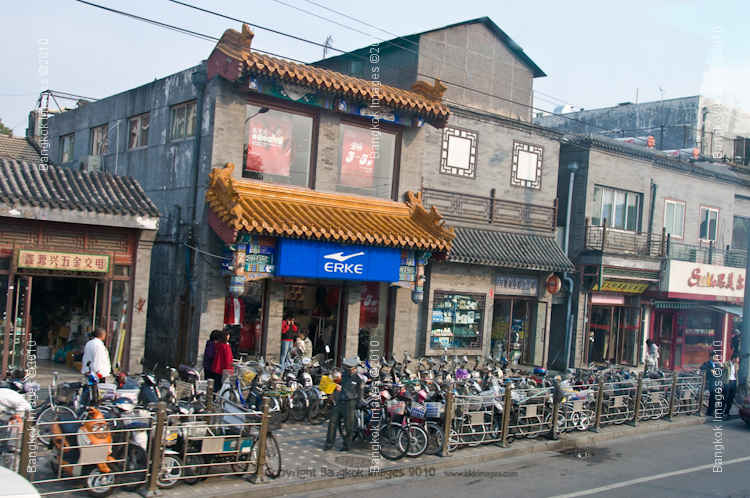
Old men talking.
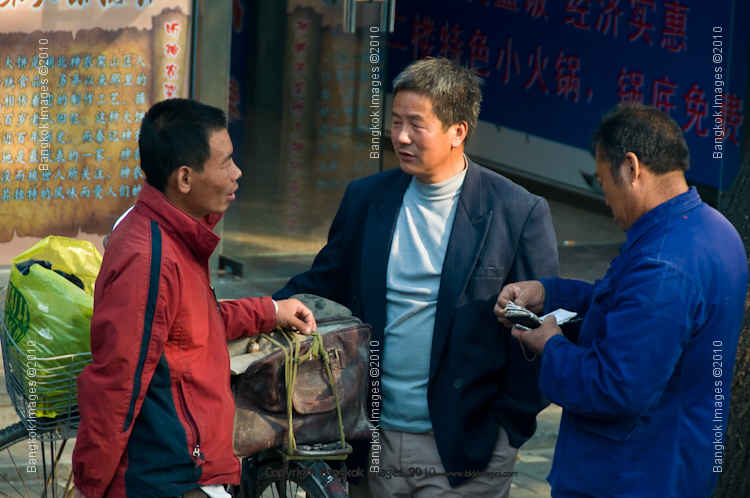
Ladies catching up on the latest gossip in the park.
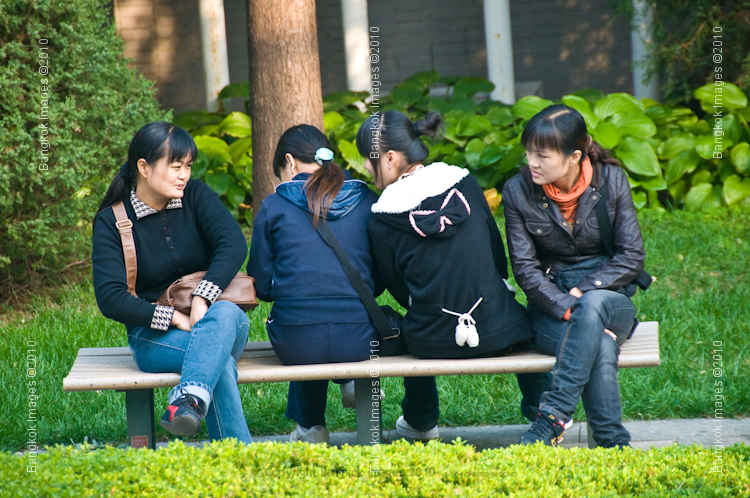
Quite a few of the older streets were lined with trees of one kind or another. Combined with the fresh paint (for the Olympics) on everything it gave the place a quaint atmosphere.
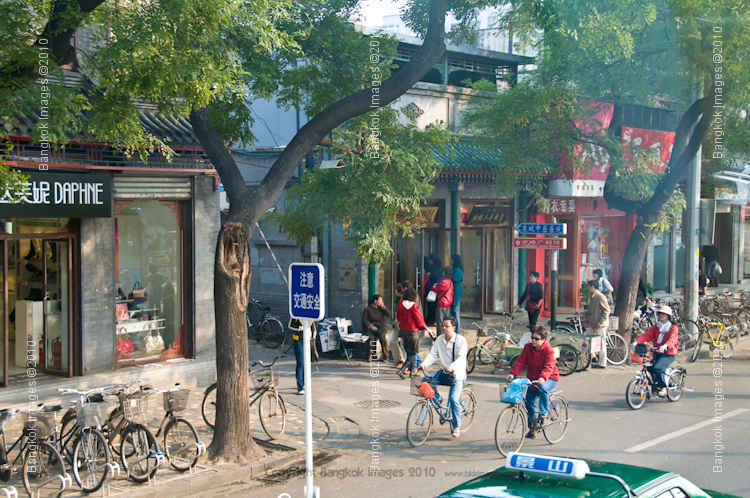
We passed another massive ancient tower of some variety. It had a side turret that was equally as massive in construction.
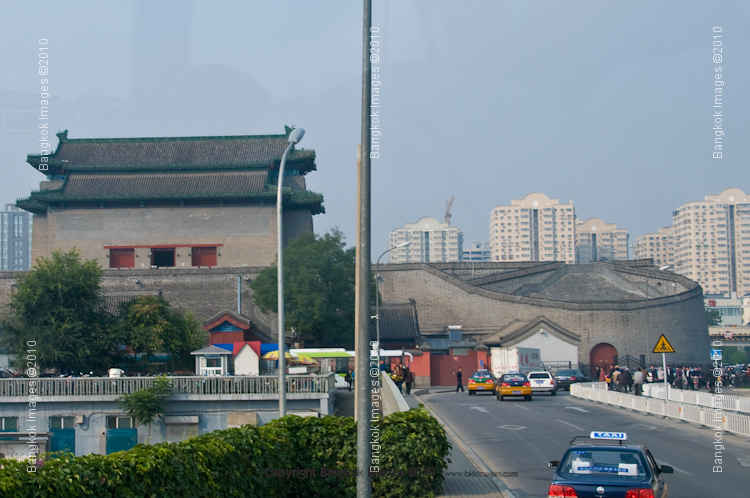
The biggest people mover in Beijing is still the bus. Some of the buses like this one are all electric. Regardless of drive the busses were almost always crowded.
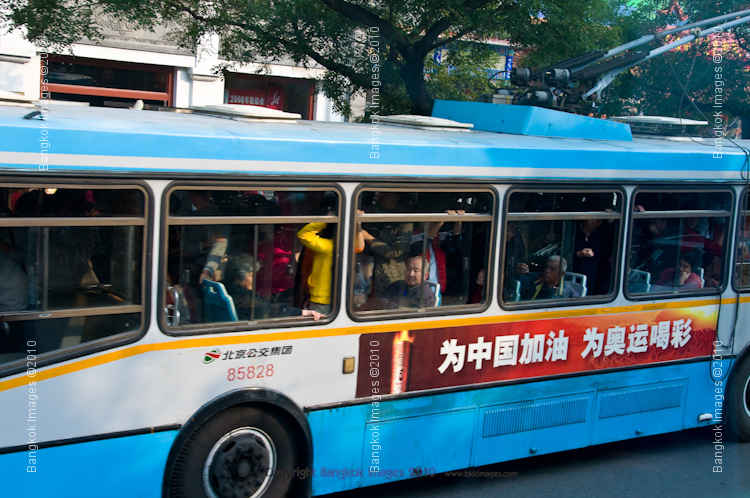
A few routes were run by articulated busses. Most of them looked pretty new and were very interesting.
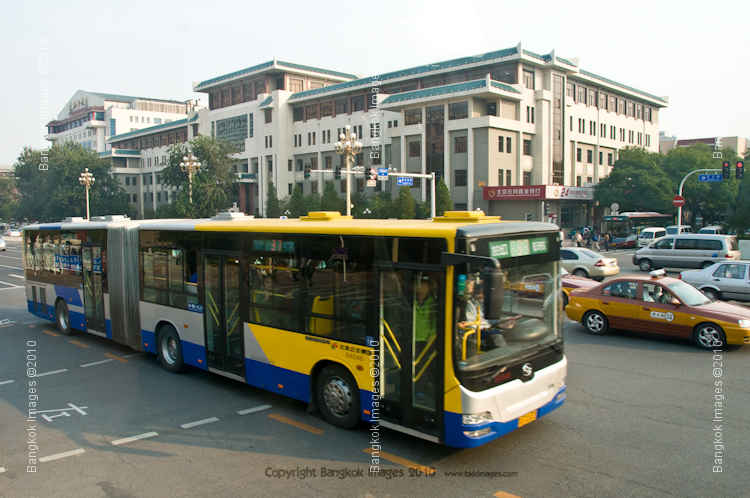
While driving along we ran into another seeming random tower. This one was a very nice shade of red.
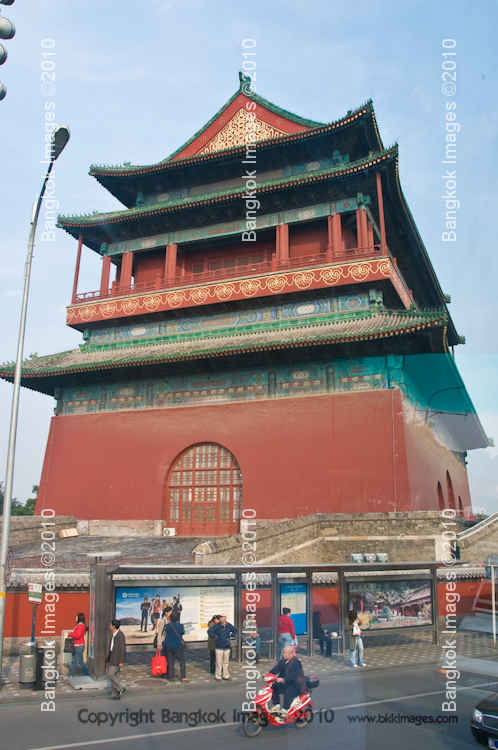
Our tour of Towers would not be complete without a more rounded example.
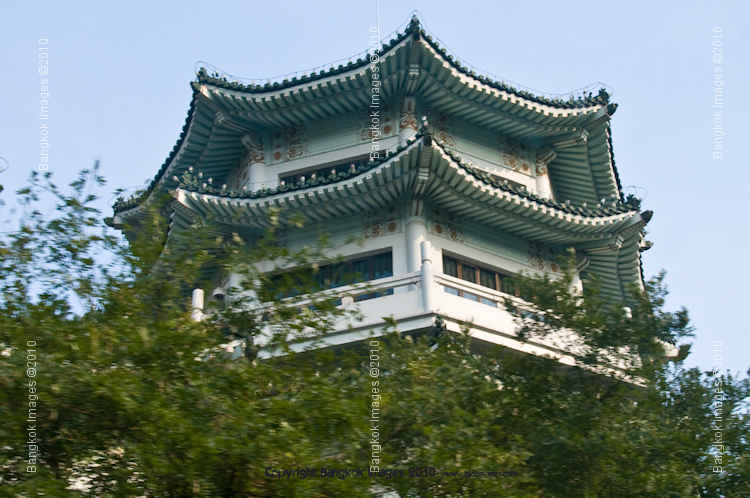
At the end of the route we made a transit around Tiananmen square which he had visited earlier.
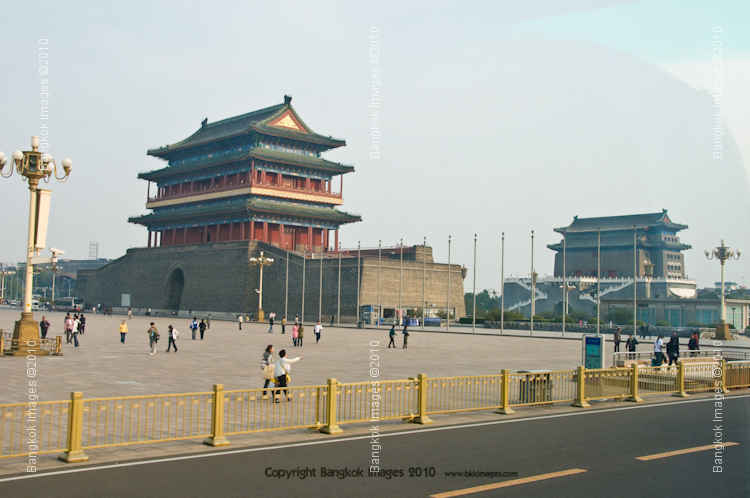
We went past Tiananmen gate while the flags were still flying and the fountains flowing.
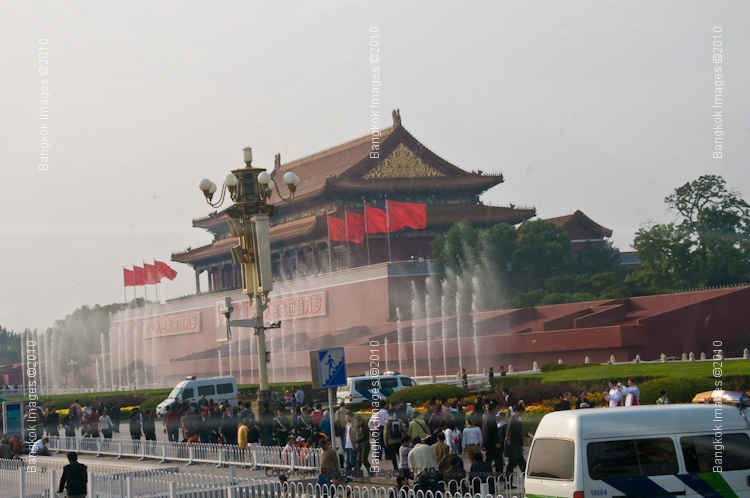
Shortly before the bus pulled into the station and our tour came to an end I snapped this picture of a young lady on a bicycle riding through what is normally a VERY wide and busy street (she had the light). To me it was really symbolic of the changes
in China. How right now the young are confronted with the old (bike) and new (cell phone) and are adapting them both to their use (smaller bikes are often preferred these days because their ease of use and storage). She’s taking her best
blend past the seat of power in what may become the world largest economy in the not to distant future. Trying to blend fashion and function, but if she’s not careful she’ll get run over in the race to the future. Either way lets
hope she’s paying attention.
